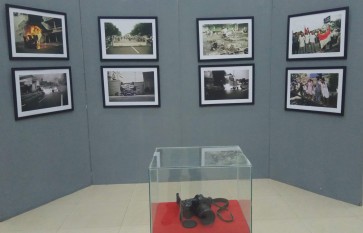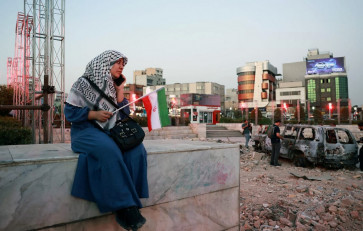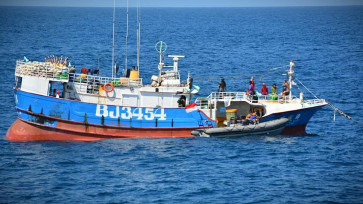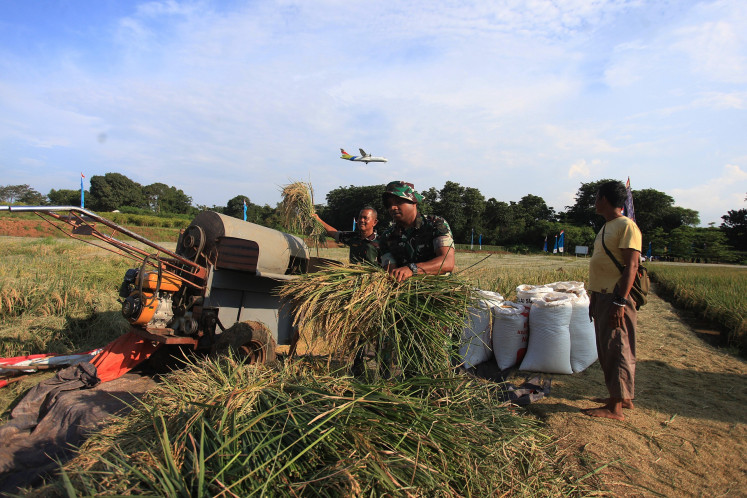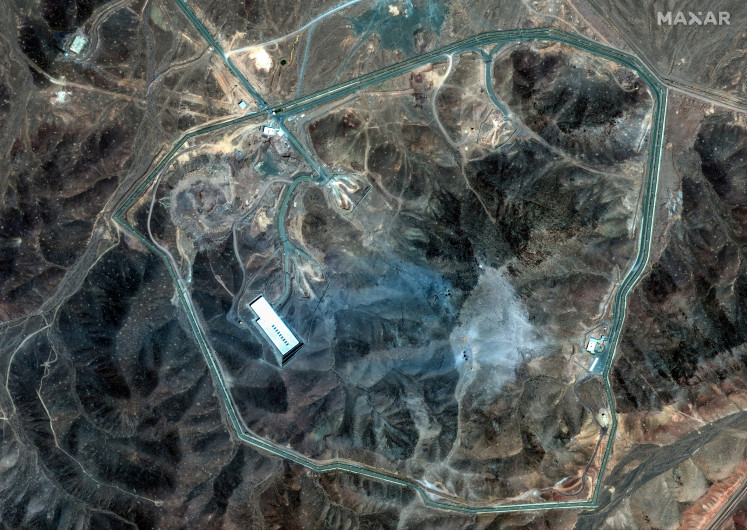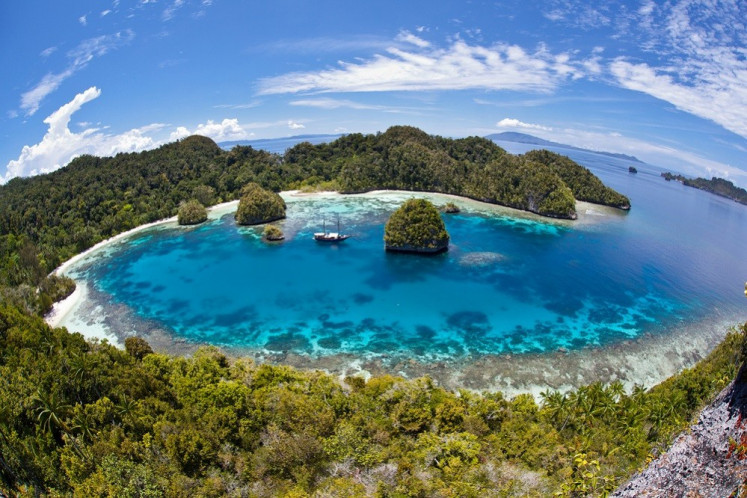Popular Reads
Top Results
Can't find what you're looking for?
View all search resultsPopular Reads
Top Results
Can't find what you're looking for?
View all search resultsJakarta’s giant sea wall gets Dutch, Korean help
The Public Works and Housing Ministry has signed memorandums of understanding (MoU) on the second phase of the National Capital Integrated Coastal Development (NCICD) with Dutch and South Korean partners
Change text size
Gift Premium Articles
to Anyone

T
he Public Works and Housing Ministry has signed memorandums of understanding (MoU) on the second phase of the National Capital Integrated Coastal Development (NCICD) with Dutch and South Korean partners.
A statement from the ministry made available to The Jakarta Post, however, did not detail what the second phase entails. The ministry’s website also contains no detailed description of Phase 2.
Public Works and Housing Minister Basuki Hadimuljono explained that the NCICD project would prevent coastal flooding and land subsidence, with some parts of the capital, especially near the northern coast, sinking by up to 12 centimeters a year. The problem had also caused a water supply crisis, he added.
Basuki first signed an MoU with the Dutch Water Infrastructure Management Ministry in New York, followed by a second one on June 27 with the Korea International Cooperation Agency (KOICA) during his trip to South Korea.
“KOICA-K-Water is a key partner to the ministry. Indonesia needs the technical skills and the support from South Korea,” said Basuki, adding that the teamwork was based on “old friendship”.
In the initial phase, the ministry is reinforcing 20.1 kilometers of embankment to protect the most vulnerable areas. The ministry already finished the first 4.5 km last year and will continue the project with both the Jakarta administration and the private sector getting involved. This will protect Jakarta until 2030, experts involved in the project believe.
Older documents, however, show that the second phase will include the construction of an outer sea wall, which will close the Jakarta Bay and turn it into an artificial lake. The statement made no mention of the cost for Phase 2, nor who would finance the project.
The project has caused controversy, and plans have changed several times over the years. Simply closing off the Jakarta Bay with a giant sea wall, critics have argued, would turn it into a “giant toilet”, because it would receive heavily polluted water from the 13 large rivers and several tributaries flowing into the bay. The initial project was called the Jakarta Coastal Defense System (JCDS).
The government later changed the defense system into a more complex “integrated” development project involving artificial islands in the shape of a Garuda bird. At the time the highly ambitious project was called the Great Garuda. However, the government later scrapped the design.
That idea has been met with criticism from environmentalists and fishermen. Some experts believe that, to save Jakarta from sinking, the city needs to stop large-scale groundwater extraction for households and commercial buildings. Experts in favor of the project, however, said Jakarta did not have enough time to stop groundwater extraction before it would be submerged.
The on-and-off affiliation of the NCICD with the controversial Jakarta Bay land reclamation project has turned NCICD into a controversial project itself.
The first phase, however, which is to reinforce the existing embankment, has been agreed to by everyone as a “critical phase”.
Having worked with the Indonesian ministry on numerous projects in the past, KOICA president Lee Mi-kyung said the NCICD was a vital step for Jakarta’s urban development, according to the ministry’s
press release.
The embankment project follows warnings by experts predicting that more than a quarter of Jakarta’s 662 square kilometers will be submerged in less than a decade unless significant measures are taken to prevent this.
A study by the geodesy research division of the Bandung Institute of Technology (ITB) painted an even grimmer picture, namely 90 percent of North Jakarta could be under water by 2050.
Like in other cities across the world, experts have identified the overuse of groundwater as a leading cause of Jakarta’s sinking problem. A 2018 report from the Jakarta Industry and Energy Agency show that 4,231 commercial buildings, such as hotels and offices, still used groundwater, while data from Jakarta tap water company PAM Jaya indicated that 40 percent of the city still relied on groundwater. (evi)

